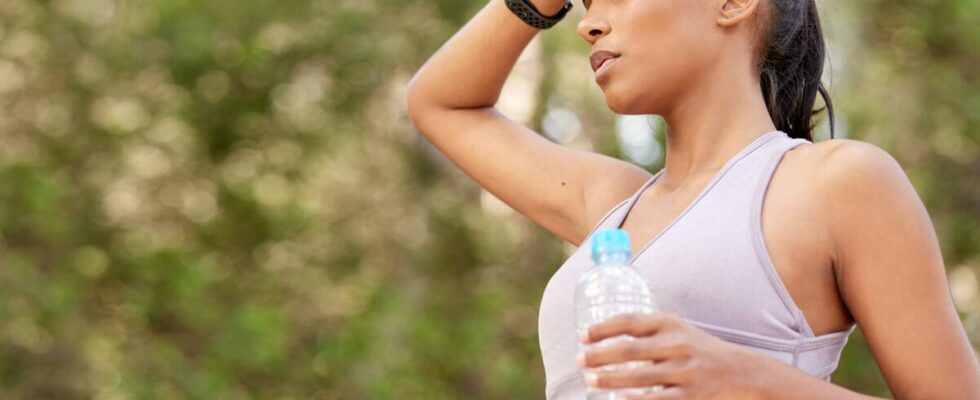Athletes are exposed to three types of skin pathologies: fungal infections (mycoses), viral and bacterial. It is entirely possible to limit the risk of developing a yeast infection, even if you regularly practice physical activity, by implementing good habits.
Mycoses: definition
THE Centers of Disease Control and Prevention explain what mycoses are, which are fungal infections. These are diseases caused by a fungus, i.e. yeast or mold. Fungal infections most of the time develop on the skin or nails, especially in people who play sports. However, yeast infections can also appear in the mouth, throat, lungs, urinary tract and many other parts of the body.
The different types of fungal infections affecting athletes
The Cleveland Clinic presents the different forms of mycoses that can affect people who regularly practice sports:
- Ringworm of the scalp (Tinea capitis): this fungal infection affects the scalp and appears in the form of gray, scaly patches which are generally accompanied by hair loss.
- Ringworm (Tinea corporis): this mycosis appears in the form of pinkish-red spots which appear surrounded by a darker ring.
- Hebra’s jock itch (Tinea cruris): this mycosis affects the groin area and is characterized by well-defined red spots and itching.
- Athlete’s foot (Tinea pedis): as the common name of this mycosis indicates, it particularly affects the feet of athletes and appears in the form of red scales on the skin.
- Onychomycosis: several species of fungi can cause infections of the fingernails or toenails, which discolor, crack, and become yellowish.
How to prevent fungal infections when playing sports?
The fungi that cause mycoses proliferate in warm, humid places. The National Athletic Trainers’ Association indicates habits to adopt to avoid yeast infections if you go to a gym or swimming pool:
- Choose loose clothing made from natural materials, which wick away moisture better.
- Wash your sports clothes after each session.
- Always wear shoes (flip-flops for example) around swimming pools, in changing rooms and in showers. Never walk barefoot in a group gym.
- If you have a skin lesion, disinfect it before and after sport, and cover it with a bandage during sport.
- Clean sports equipment before and after use, with wipes or a disinfectant spray.
- Place a towel between your skin and surfaces used by other people, including benches, bicycle seats, machines.
- Use your own yoga mat and clean it after each class.
- Wash your hands thoroughly immediately after exercising.
- Shower as quickly as possible after practicing your sport. Then put on clean clothes, especially clean socks and underwear.
- Do not lend your towel or borrow someone else’s.
Sources
- Types of Fungal DiseasesCenters of Disease Control and Prevention, June 16, 2023
- Fungal Infections (Mycosis)Cleveland Clinic, October 25, 2022
- Protect YourselfNational Athletic Trainers’ Association, March 29, 2022
- Hebra’s jock itch (tinea cruris), The MSD Manual – Consumer Version, September 2021
Read also :
⋙ Skin mycosis: symptoms to recognize and the best treatments
⋙ Vulvar mycosis: causes, symptoms, treatment, how to avoid it
⋙ Mycosis of the foot: how to get rid of it?
